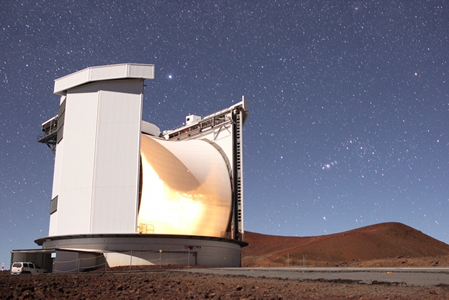 Tutor: Stefano Andreon
Tutor: Stefano AndreonMagistrale/Master - Durata: 6-9 mesi. The James Clerk Maxwell Telescope (JCMT) is a sub-millimeter radio telescope at the top of the Hawaii volcano, which is a site ideal for Sunayev-Zeldovich (SZ) observations of galaxy clusters. The telescope hosts perhaps the largest bolometer camera (SCUBA-2, 10000 pixels, four times bigger than the second largest camera), ideal for observing the SZ signal induced by the scatter of the cosmic microwave background photons on the cluster electrons. The SCUBA-2 camera delivers images with an angular resolution better than any other SZ camera. Since the SCUBA-2 camera started operations more than 10 years ago, the archive is rich with observations, including those of galaxy clusters, some of which of unique length (80 hours integration). However, this unique, deep, wide field, and high resolution set is largely unexploited for two main reasons: a) lack of interest of the researchers who proposed the cluster observations, mostly interested in studying the variability of the point sources in the cluster; and b) limitations of the settings of the fully automated pipeline currently used to reduce SCUBA-2 data. In fact, its parameters are tailored for point sources, whereas galaxy clusters are extended. If blindly applied to cluster observations, the SCUBA-2 pipeline will subtract the (interesting) spatially extended signal with the (varying) atmosphere contribution, leaving (almost) no SZ signal in the reduced image. Finding a parameter setting appropriate for the reduction of observations targeting extended sources would therefore open the doors to use the widest field and best resolution SZ data available. This thesis aims to find a good setting of the SCUBA-2 reducing pipeline allowing us to remove the atmosphere contribution without entirely subtracting the cluster spatial extended signal. The student will familiarize him/herself with the various observing modes, with the existing SCUBA-2 pipeline, its parameters and their impact on the derived map, and will find a combination of parameters that are optimal for the goal. Characterization of the SZ signal of one cluster is part of the thesis in the case an optimal setting is promptly found. [Image caption & credit: The James Clerk Maxwell Telescope] |